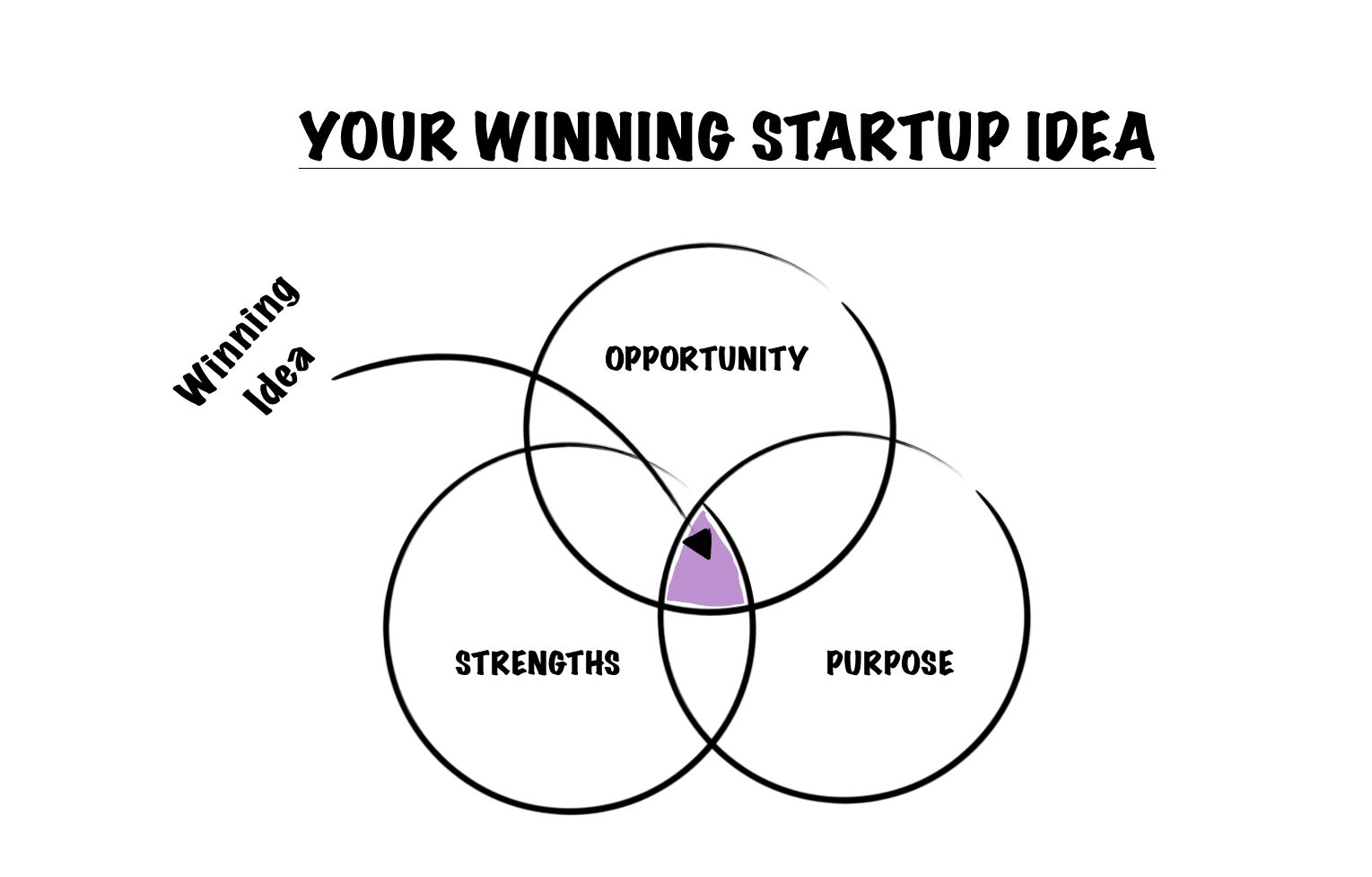Find Your Winning Startup Idea with The OSP Method

In my 15+ years as an entrepreneur, startup advisor, and incubator mentor, I've observed common themes in businesses that succeed in the long run. These companies have winning ideas.
A winning idea targets the right opportunity, aligns with your strengths, and connects to a larger purpose.
Missing any of these elements can lead to a dead end. Perhaps you pursued your passion, only to realize there's no money in it. Or you chased an opportunity for money but lacked the skills to succeed. Even worse, you might have succeeded, only to feel empty and discover it wasn't what you truly wanted.
In this article, I'll guide you through my three-step framework for generating a winning business idea. It's called...
The OSP Method
Opportunity, Strength, and Purpose
Step 1: Find an Opportunity Worth Pursuing

Identifying the right business opportunity is crucial for success. Without the right opportunity, strength and passion don't matter. This must be your driving force which everything else ties into. Consider these five factors to determine an opportunity worth pursuing.
A. Growing market
Is the market growing? Will it expand over time, reaching more customers and markets? This is essential for long-term success. When we started our cookie company, the keto market was growing. We were among the first keto snack in the industry. Three years later, keto snacks were mainstream being sold at Costco, Wholefoods, and Target.
Quick tools & tactics:
- Google Trends: Analyze search data to gauge interest in a topic over time.
- Market research reports: Read industry-specific reports from sources like IBISWorld, Statista, or MarketResearch.com. Many of these sources are paid, but you'll learn a lot from their free information too.
- Industry blogs and news: Stay updated with publications such as TechCrunch, Fast Company, and VentureBeat.
B. Early-Stage
Are you at the tipping point of something new? My successful ventures in the keto and men’s grooming space caught a growing market at its inception. For example, men's grooming was popular in Europe but was still taboo in the United States. Publications like GQ and Esquire wrote mostly about style. I took this opportunity to dive into the grooming space. Once it grew in the US, I was ahead of the curve.
Quick tools and tactics:
- Product Hunt: Discover new and innovative products and startups.
- Kickstarter and Indiegogo: Monitor crowdfunding platforms for emerging ideas. (Read: How I Raised Over $100K on Kickstarter).
- Startup accelerators and incubators: Follow organizations like Y Combinator, Techstars, or 500 Startups for the latest startup trends. CSUF has an incubator specializing in Social Entrepreneurship.
C. Sustainable
When choosing your opportunity as yourself if it's part of a larger macro trend or just a fad. You don't want to spend time and money on a startup that goes away like the Snuggy.
Quick tools and tactics:
- Pew Research Center: Access reports and data on social, demographic, and economic trends.
- TrendWatching: Get insights into consumer trends across industries and regions.
D. Profitable
Can you make money doing it? Ensure the business opportunity has the potential to generate a strong profit margin. The higher the profits, the more you can invest in growth.
Quick tools and tactics:
- Industry benchmarks: Compare your projections with industry benchmarks from sources like BizMiner or BizStats.
- Pricing strategies: Research pricing strategies in your industry to ensure competitive pricing while maintaining profit margins.
E. Competitive Advantage
Can you offer something unique that differentiates your product or service from competitors through innovation or quality of service? Can your idea be easily replicated? Your competitive advantage helps determine your staying power and ability to succeed.
Quick tools and tactics:
- SWOT analysis: Conduct a SWOT analysis to identify your strengths, weaknesses, opportunities, and threats.
- Value Proposition Canvas: Develop a strong value proposition that sets you apart from competitors using the Value Proposition Canvas by Strategyzer.
Step 2: Align with Your Strengths

Regardless of how great an opportunity is, if you don't have the necessary strengths, you're unlikely to succeed. You'll need to find tools or team members to fill the gaps.
"It is far more lucrative and fun to leverage your strengths instead of attempting to fix all the chinks in your armor. The choice is between multiplication of results using strengths or incremental improvement fixing weaknesses that will, at best, become mediocre. Focus on better use of your best weapons instead of constant repair.” - Tim Ferriss
Use this five-step process to find your strengths:
- Look at your history: Examine past successes and achievements to identify areas where you've excelled and demonstrated expertise. As Tony Robbins says, "Success leaves clues."
- Ask friends and family: Gain objective insights into your strengths by seeking input from those who know you well. Survey your five closest friends and ask them what they think you're good at. Also ask, what they think you could improve.
- Take personality tests: Utilize assessments to better understand your personality traits, strengths, and weaknesses. I like PrinciplesYou and 16Personalities.
- Find themes: Analyze recurring patterns across your achievements and experiences to pinpoint where your strengths lie.
- Assess your resources: Identify unique advantages, such as financial assets, valuable connections, or other resources that can contribute to your success.
Step 3: Align with Your Higher Purpose

Passion is critical to the success of any business. Passion is your "why" that will keep you going when times are tough. To tap into your purpose, use this framework (modeled and tweaked after Tim Ferriss’ Dreamlining Framework):
Answer the following questions:
- If you could have anything in the world and there was no way for you to fail, what would you want?
- If you had $10 million and all the resources in the world, how would you spend your time?
- Once you have your answers, ask Why three times. Get deep until you've reached you can't answer the question anymore. Here is where your purpose lives.
- Summarize your answer and turn it into a statement. For example, mine is, "I empower entrepreneurs to unlock their full potential."
An idea is considered a winning idea once it goes through these three steps: opportunity, strength, and purpose. If your idea overlaps these three circles, you're on a good path to success.
Stay tuned for an upcoming post on how to test and validate your idea to maximize your chances of success. Sign up for the newsletter to make sure you don't miss it.